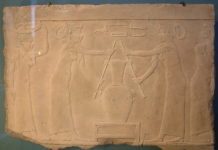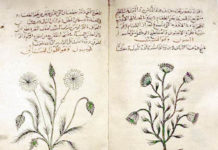Angels, shepherds, a couple on a donkey, wise kings following a star. So begins one of the world’s most popular stories, and the mother of all Christmas stories. Now, to the original nativity scene, we’ve added trees full of lights, elves, reindeer, and a white bearded Santa who seems to think he’s Mr. Xmas. And all this applies to the 25th of December.
Prehistoric Rituals
The origin of this special day is lost in prehistoric times. Each year, as seasons returned, hunters-gatherers established rituals to pace the rhythm of survival tasks on the resources of their habitat, which they often chose to change by calculated migrations. In time, most of Northern Europe had Yule customs linking their gods, light and a special tree to the shortest night of the year.
Eons later, at the time of Jesus’s birth, the Romans controlled a vast territory and its diverse populations, including Judea. Both Jewish and Roman calendars and holidays are mixed in the story of Christmas. The first known Christian reference to special birthdays is ironic, as Origen of Alexandria was writing around 202 against the Roman celebration of their favourite people’s birth. The holidays’ tradition for early Christians was derived from the Jewish calendar and the death of Jesus was associated with Passover. His birth started to be dated from the time He would have been conceived, based on the Gospel as spring’s equinox.
A 2000-Year-Old Story
Before Pope Gregory XIII set the Gregorian calendar in 1582, Christmas could not have been placed on December 25th. Even as Christians started to celebrate the birth of their Saviour, it is difficult to be sure of the D-day, because days were not numbered the same way. So the question is, when were the northern winter’s solstice and the Christian traditions combined?
The answer to this stems from yet another ritual, the Roman Sol Invictus holiday, set on December 25th, which Pope Liberius chose in 354 as Jesus’s day of birth. The 6th of January remained associated with Jesus in many countries, though, just as in early America, Thanksgiving held its ground against Xmas, because of the settlers’ puritan opinion opposing excessive rituals. So, it’s only during the 20th century that Xmas became the big business it is, culminating on December 25th.
Santa Claus
During the 4th century, Nicholas was the bishop of Myra in Lycia, then a part of what is now Turkey. He became famous for his generosity. He also performed outstanding miracles (miracles were frequent then, and some were more remarkable than others), like bringing back to life children who had been killed. Nicholas became a legend. The Germans likened him to the Norse god Odin and called him Santa Klaus. That’s the name now given to one of the world’s well-known characters. In European countries, it stands for Saint Nicholas. In the Americas, the religious aspects lost some ground when cartoonist Thomas Nast drew Santa for the Harper’s Weekly in 1863. In 1915, White Rock Beverages used Santa to sell mineral water, and in the 1930s, Coca-Cola made the big man in a red suit very popular.
Since Santa was already part of Christmas traditions in Europe, rituals gradually merged. In different countries, gifts were exchanged on New Years’ Eve or on the Kings’ Day, the 6th of January.
Religions Are Complicated
Like most religious customs, rituals associated with the last days of the year, including Christmas day, evolved slowly as a result of syncretism. Syncretism may be defined as a religious system that gives a name to the fusion of different doctrines. Generally speaking, any religion is the result of a certain amount of syncretism, as beliefs and rituals are assembled through a series of significant events.
For the three Jewish based religions, old rituals influenced new ones. Rites evolved after the lifetime of their founders, Jesus for the Christians, and Mohammad for the Moslems, while Jews kept the legacy of Abraham and Moses. Common aspects are obvious: there is only one God, and life is sacred. Yet, in each religion, sects were formed around subtle definitions of what is godly or not, often in response to political forces. Centuries of war and conflicts have proven that such forces drive people to fight, even among believers.
Christmas Today
Today, in most countries, Christmas is associated with a wish for peace on Earth. Christians remind themselves of the miraculous birth of Jesus on December 25th, but joyfully include Santa Claus or Saint Nicholas in the exchange of gifts, decorate millions of fir trees, and eat tons of seasonal delicacies.
For many, Christmas has fallen under the weight of seasonal marketing.
Sources:
- Race et Histoire, by Claude Lévi-Strauss, Paris, Unesco, 1952
- The New Testament (mostly Mark and Luke)
- Misquoting Jesus: The Story behind Who Changed the Bible and Why, by Bart D. Erhman, HarperSanFrancisco, 2005
- Wikipedia articles on Popes Gregory XIII and Liberius, Origen of Alexandria and Saint Nicholas








